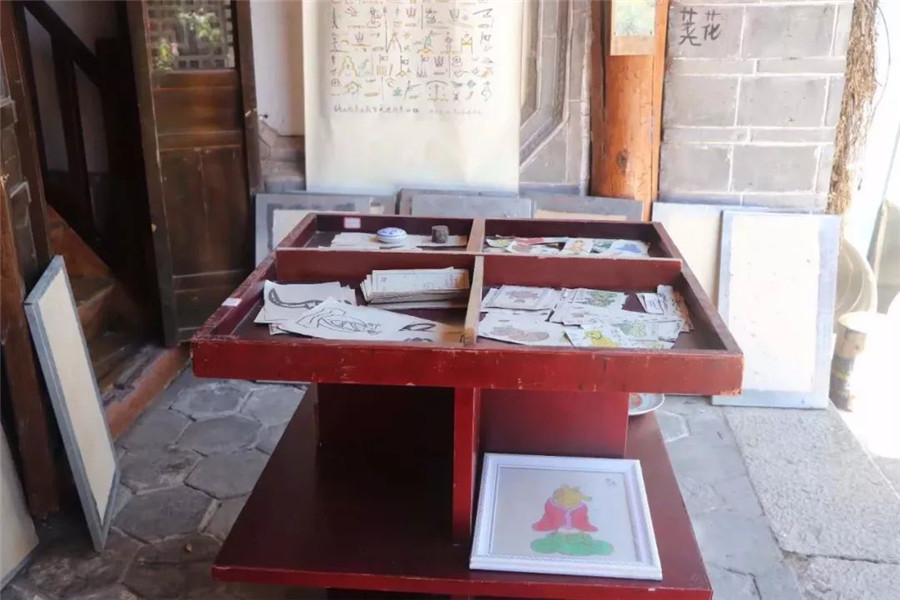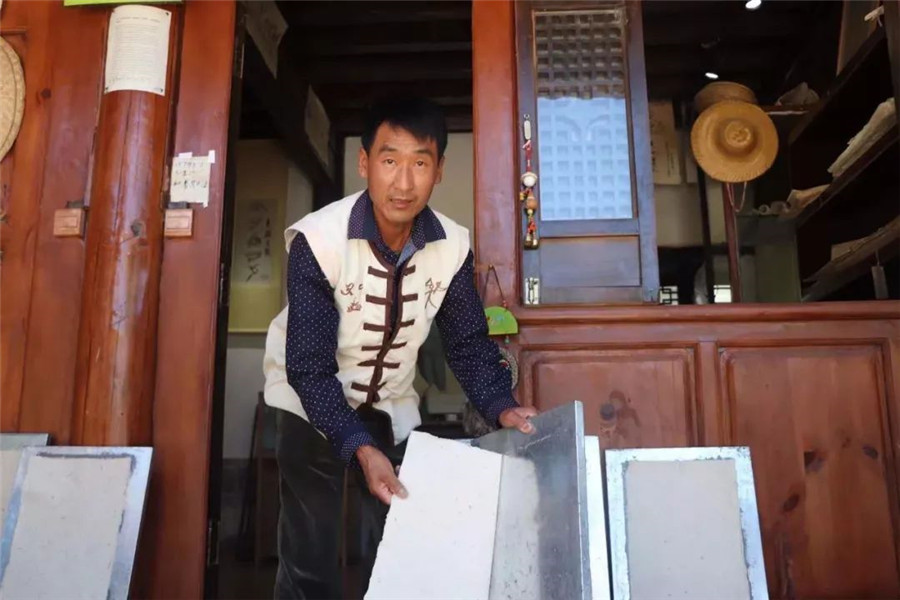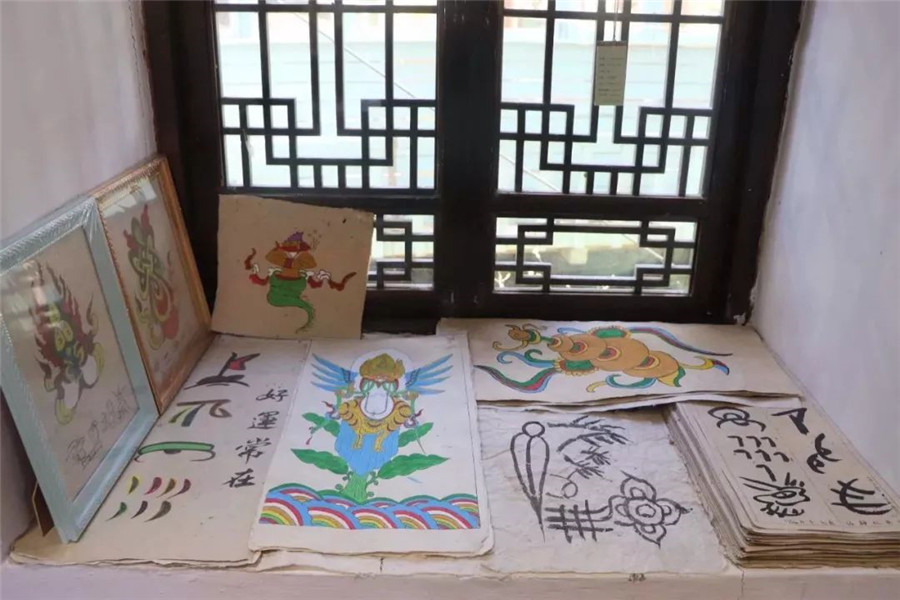Dongba Paper in Lijiang
Characteristics of Dongba Paper
-
Durability and Preservation: Dongba paper is known for its remarkable durability. It is resistant to insect damage and can be preserved for centuries, earning it the reputation of “paper that lasts a thousand years”.
-
Material and Craftsmanship: The paper is made from the bark of the “A Dang Da” plant (a type of Daphne plant), which is native to the high-altitude regions of Yunnan. The process involves several intricate steps, including boiling, pounding, and sun-drying the bark. The unique combination of raw materials and traditional techniques results in a thick, strong, and smooth paper.
-
Cultural Significance: Dongba paper was traditionally used by Dongba priests to write scriptures and create paintings, making it an essential part of Naxi religious and cultural practices. It is often referred to as the “living fossil” of human writing due to its ancient origins and continued use.
Modern Uses and Preservation
-
Cultural Products: Today, Dongba paper is not only used for traditional purposes but also for creating modern cultural products such as photo albums, bookmarks, lampshades, and souvenirs. These items are popular among tourists visiting Lijiang.
-
Cultural Heritage: The art of making Dongba paper has been recognized as an intangible cultural heritage in China. Efforts are being made to preserve this traditional craft through workshops, cultural centers, and by encouraging younger generations to learn the technique.




 7 Days GolfingTour
7 Days GolfingTour
 8 Days Group Tour
8 Days Group Tour
 8 Days Yunnan Tour
8 Days Yunnan Tour
 7 Days Shangri La Hiking
7 Days Shangri La Hiking
 11 Days Yunnan Tour
11 Days Yunnan Tour
 6 Days Yuanyang Terraces
6 Days Yuanyang Terraces
 11 Days Yunnan Tour
11 Days Yunnan Tour
 8 Days South Yunnan
8 Days South Yunnan
 7 Days Tea Tour
7 Days Tea Tour
 8 Days Muslim Tour
8 Days Muslim Tour
 12 Days Self-Driving
12 Days Self-Driving
 4 Days Haba Climbing
4 Days Haba Climbing
 Tiger Leaping Gorge
Tiger Leaping Gorge
 Stone Forest
Stone Forest
 Yunnan-Tibet
Yunnan-Tibet
 Hani Rice Terraces
Hani Rice Terraces
 Kunming
Kunming
 Lijiang
Lijiang
 Shangri-la
Shangri-la
 Dali
Dali
 XishuangBanna
XishuangBanna
 Honghe
Honghe
 Kunming
Kunming
 Lijiang
Lijiang
 Shangri-la
Shangri-la
 Yuanyang Rice Terraces
Yuanyang Rice Terraces
 Nujiang
Nujiang
 XishuangBanna
XishuangBanna
 Spring City Golf
Spring City Golf
 Snow Mountain Golf
Snow Mountain Golf
 Stone Mountain Golf
Stone Mountain Golf











